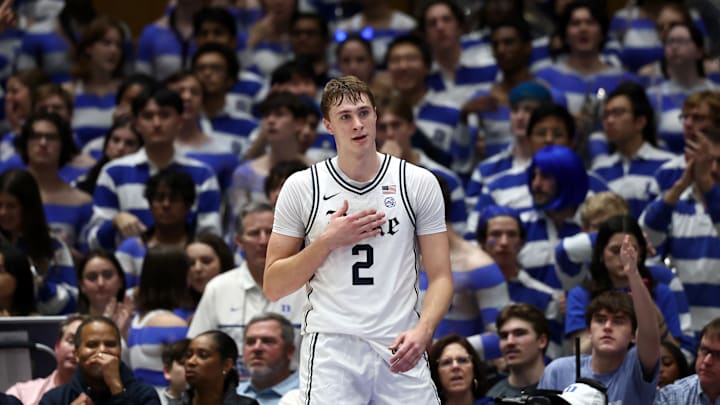Selection Sunday is just over five weeks away and college basketball teams are working hard to make a strong case for inclusion in the 2025 NCAA Tournament. The Bubble Watch is firing on all cylinders as teams can improve their stock with big wins or take a significant hit with an unexpected upset loss in league play.
One of the key talking points on the resume of a potential tournament team is their record in Quad 1 games or if they've picked up a Quad 3 or 4 loss. The Quadrant system is a relatively new invention, so here's what you need to know if you're trying to make sense of your favorite program's team profile in the latest NET Rankings.
When was the Quadrant system invented?
The Quadrant system came about in the summer of 2018, when the NCAA determined that one of the original metrics to determine at-large teams, the RPI (or Ratings Power Index), was becoming outdated. RPI was determined by the following factors:
Winning Percentage
Average Opponent's Winning Percentage
Average Opponent's Opponent's Winning Percentage
This method allowed teams who scheduled smartly to game the system and give themselves a lower RPI, making it harder to determine who the best teams truly were as opposed to who just played the scheduling system correctly. The NET ranking is designed to cover more than just winning percentage, including the following factors as explained by the NCAA:
Game Results
Strength Of Schedule
Offensive And Defensive Efficiency
Game Location
Quality Of Wins And Losses
This model allowed the selection committee to break down a team's profile in more detail, giving them more tools in the toolbox (a phrase often used by committee members when explaining at-large selections) to identify the best candidates for inclusion into the field of 68.
What is a Quad 1 win?
One of the identifying features of the NET Rankings is how it divides game results into quadrants that factor in the quality of the team faced and the location the contest was played in. The Quadrants are broken down as follows:
Quad 1: Games against teams ranked 1-30 in the current NET at home, games at a neutral site against teams ranked 1-50 in the NET, games on the road against teams ranked 1-75 in the NET.
Quad 2: Home games against teams 31-75, neutral site games against teams 51-100, away games against teams 76-135
Quad 3: Home games against teams 76-160, neutral site games against teams 101-200, away games against teams 136-240
Quad 4: Home games against teams 161-353, neutral site games against teams 201-353, away games against teams 241-353
This system is clearly stacked to favor power conference teams, who will play more Quad 1 games in league play and have more opportunities to accumulate Quad 1 victories that show they can compete against the best teams in the country. The current top team in the NET, Auburn, has a 12-1 record in Quad 1 games thanks to a strong schedule and is almost a lock to land a No. 1 seed in the NCAA Tournament.
Quad 1 record is an important factor for bubble teams as Quad 1 victories (particularly those that come on the road) are a good indicator that they are capable of being competitive in an NCAA Tournament game. This benefits a team like West Virginia, which has a 14-8 record but a NET of 42 thanks to a 5-6 record in Quad 1 games, indicating they are likely a safe bet to make the field.
Playing a lot of Quad 1 games doesn't mean much if you don't win them, like how North Carolina is currently sitting at 45 in the NET but is 1-9 in Quad 1 games. Scheduling strongly is important to the selection committee but teams need to show an ability to win these kinds of games, something the Tar Heels haven't done as of yet.
The other important number to watch here is the losses a team has against teams from either Quad 3 or Quad 4, which are considered to be bad losses since they come against teams highly unlikely to make the tournament short of winning their conference's automatic bid. This part of a resume is more of a problem for high-achieving mid-majors, who don't get as many opportunities to play Quad 1 games but can easily land a bad Quad 3 loss if they have a bad night in league play, like how Missouri Valley leader Drake is 19-2 overall but is a long shot to land an at-large if they don't win Arch Madness with a NET of 58 and a Quad 4 loss on their ledger.
It is also important to note that the NET is not a static ranking and is updated daily after the previous night's results are calculated. As a result, a win that qualifies as Quad 2 on one day can become a Quad 1 victory the next if a team jumps tiers, which is something Xavier is watching as their home win against UCONN currently is a Quad 2 victory with the Huskies sitting at 31 in the NET. If the Huskies get hot and rise inside the Top 30 of the NET, that will add a critical second Quad 1 win to the Musketeers' resume.
While Quad 1 wins are not the only factor considered by the selection committee when picking at-large teams, they are significantly valued as a demonstrable ability to beat top-flight competition. If your favorite team is on the bubble and picks up a road win against a hated rival (particularly one who is ranked), they really helped themselves boost their bubble stock.
